
Wait, What’s Really in That Bottle?
Ever find yourself squinting at your water bottle, trying to decode the fine print under the flashy label? Me too…especially when all you want is a quick, healthy sip and the bottle throws a math test at you. And then there’s the real kicker: how much water is even in a water bottle in liters? Why does it all feel so confusing for something that should be simple—just water, right?
Let’s get into it: real talk, no jargon, no guilt, and definitely no preaching. I’ll walk you through the weird world of water bottles, how much they hold, and—honestly—why you should probably care more than you think. Because as it turns out, there’s so much more to your daily hydration than ticking off a health goal on your app.
Which Size Are We Even Talking About?
What “Standard” Really Means
You’ve seen them everywhere—the “regular” bottles in grocery stores, gym fridges, hotel mini bars. Most of these are the 16.9-ounce kind, which, despite the odd number, is basically 0.5 liters of water. (Yep, about half a liter. Easy to remember, now that you know!) That means if you want to hit the classic “2 liters per day” advice, you’re looking at four of these bottles piled up on your desk.
It’s kind of silly how those tiny conversions can trip us up. Have you ever grabbed a bottle, convinced you’re staying hydrated, only to later wonder if it even counts? “Did I drink half my goal or all of it?” Just me?
Quick Table Cheat Sheet
| Bottle Size (oz) | Liters Equivalent |
|---|---|
| 8 oz | 0.24 |
| 12 oz | 0.35 |
| 16.9 oz | 0.5 |
| 20 oz | 0.59 |
| 1 liter | 1.0 |
Why the Numbers Change (And Why It Matters!)
There’s a trick to this: the US goes with fluid ounces, Europe with milliliters. In the US, that “regular” 16.9 oz is 0.5 liters. Head to the UK or parts of Europe, and sometimes a “standard” bottle creeps a little under or over that mark, just to keep us guessing. It’s the same basic bottle—only the label changes.
So…next time you’re standing in line at a café in Spain or New York, just glance at the ml or oz number, move the decimal point, and you’ll know what you’re working with. (Or just remember: two regular bottles? Pretty much a liter. Simple.)
How Many Bottles Make Up My Real Hydration?
Putting Numbers in Perspective
You might be thinking, “This is cool and all, but how much should I really be drinking?” Let’s make it relatable. For most active adults, daily hydration lands somewhere between 2 and 3.7 liters—yep, that’s about four to eight regular water bottles. But that’s just a ballpark. Your needs swing based on the weather, your workout, how much you talk (trust me, on a podcast day, I’m like a camel), and plenty more.
For fun, count your How many water bottles is 2 liters…it’s “about four.” Super handy if you’re trying to keep it simple and avoid pouring out of huge jugs at work. If you’re meal prepping, packing up for a hike, or managing family hydration, knowing how many liters is 4 bottles of water really helps you get it right—no soggy backpacks, no mid-hike drama.
Real Life Example: Fitness Friend Fails…and Wins
My buddy Sam? He always struggled to remember if he’d had enough by dinner. Used to walk around clutching his favorite branded bottle—gotta get those steps, right? But it wasn’t until he switched to actually counting (four 0.5-liter bottles a day) that his afternoon brain fog faded. Hydration: not as mysterious as it seems.
Wait, There’s More—Workouts, Weather, and Wellness
If you’re sweating it out—hitting the gym, playing sports, training for your first 5K—your needs might spike. Sometimes you see athletes with those gigantic 1-liter or even 1.5-liter bottles, and honestly, that makes tracking easier. You can glance and know: “Yep, I’m halfway done.” Of course, if you’re old school and still love the smaller bottles, just add up as you go (that’s where knowing about how many liters is 4 bottles of water comes in clutch again).
But also, listen to your body. Thirst, headaches, dry lips, lack of focus—those are nudge-you-in-the-ribs signals you might need to top up. Not every day needs a spreadsheet…sometimes intuition wins.
The Surprising Story of the Hidden Water
What Is the Water Footprint?
So you’ve got your 0.5 liters per bottle… but what if I told you the real water story is way bigger? Drumroll: it actually takes around 5.3 liters of water to produce that regular old plastic bottle you’re tossing after lunch. Yes, really. No typo. (According to research on the environmental cost of plastic water bottles.)
We’re talking about the “water footprint”—all the H2O needed along the journey: extracting and refining oil, making plastic, cooling the machines, and dealing with all the mess leftover after. The actual drink inside is a drop compared to the total water budget sucked up in the process.
Let’s Get Visual: Bottled Water Math
| That Single Plastic Bottle… | Liters of Water |
|---|---|
| Water you actually drink | 0.5 |
| Water used to make the bottle | 5.3 |
| Total Water Consumed | 5.8 |
It’s wild, isn’t it? One bottle, and the planet’s spent almost six times as much water just getting it onto the shelf as you’ll ever actually drink. Suddenly, that grocery store shelf feels like less of a bargain. I sometimes do a mental calculation: “Did I need this…or could I have just refilled at the fountain?”
Where Does All That Water Go?
Blue vs Grey Water—Don’t Tune Out, This Is Cool Stuff
Quick science detour, because the lingo sounds fancy but actually makes sense. There’s “blue water” (the clean H2O that’s literally taken out of rivers, lakes, wells), and “grey water” (the water used to dilute and clean up all the yucky stuff left over from making plastic). In that 5.3 liters, both types count. Think about it: every convenience has a hidden tab behind it. Even if you recycle, making and re-making plastic chugs through resources like a thirsty marathon runner on mile 24.
Honestly? I used to feel a little helpless reading these stats. But the more I understood the story of how much water is in a water bottle in liters (and how many more liters are hiding in the making), the more determined I got to fix my habits—without beating myself up about it.
So, What’s the Best Way to Hydrate?
What About Reusable Bottles?
Okay, pause—don’t beat yourself up if you love the convenience of store-bought bottles. Nobody’s perfect, and there are days when that’s just practical. But if you’re ready to swap to a reusable bottle, here’s where it gets fun: you fill up, skip the hidden water footprint, and can keep track of your “liters” with WAY less guilt. There’s glass, stainless steel, even those cute ones that fold flat when you’re done. Suddenly, you’re saving money and water…plus your car isn’t full of empty plastic anymore. (Been there, trust me.)
Eco-Friendly Hydration Showdown
| Option | Water Footprint Per Use | Health Perks |
|---|---|---|
| Single-Use Plastic | High (5.3 L per bottle) | Convenient, widely available |
| Reusable Glass | Low (after initial) | Tastes fresh, no chemicals |
| Stainless Steel | Minimal | Keeps water cool, super durable |
Still Love Plastic? Here’s What to Do
No shame if you aren’t ready to go full eco-warrior. Start by cutting back: one less bottle each week adds up to dozens a year. Track your intake (two bottles = a liter). Use public refill stations when you can. Little changes are progress.
If you’re ever stuck wondering if you’ve hit your hydration goal, check out this tip: search how many water bottles is 2 liters and use your answer as your shopping list. Or share it with friends—or that “hydration accountability” coworker who always tells you to drink more water (we all have one!).
Stories from the Real World (and What We Can Learn)
Travel, Family, and the Unexpected Water Win
Last summer, I went on a road trip with a few friends—one of whom is basically a water bottle connoisseur. She always had her huge 1-liter stainless steel beast handy. The rest of us? Sheepishly clutching our “disposable” half-liter bottles. Guess who never had to pull over, never got cranky in the afternoon, and actually had enough water for everyone to top up once the reusable was empty? Lesson learned. Now, my trusty refillable bottle is my MVP for road trips and gym days.
The biggest surprise? Not just the sense of smug satisfaction, but how quickly it became a no-brainer. Fill it in the morning, easy math (that’s two regular bottles), and I know I’m half-way to my goal. Fun fact: hydrating smarter actually made me snack less—sometimes thirst is just masquerading as hunger!
Counting Liters on the Daily
Let’s be real—most of us aren’t obsessed with milliliters. But if you want to bring a little more intention to your health game, try tracking your liters for a week. Whether you do it with a giant bottle, or just tally up how many liters is 4 bottles of water you’ve sipped while binge-watching your latest show, you’ll start to feel how hydration ties into energy, mood, digestion…even skin. It sneaks up on you in all the best ways. Go on, try it and let your body prove it to you.
Conclusion: More Than a Number…It’s a Challenge
So, now you know: how much water is in a water bottle in liters? Most of us are carrying around 0.5 liters per standard bottle. Simple…until you pull back and spot the 5.3 liters hiding in the manufacturing shadow. Weirdly inspiring, right?
You’re not being asked to change overnight—or feel guilty about that next convenience drink run. Instead, take this as a personal challenge: can you hit your hydration goals with one less disposable bottle a week, or just swap to a reusable for desk days? Every little switch adds up. And hey…if you tell a curious friend how many water bottles is 2 liters (about four), you’re officially a member of the “hydration math squad!”
Little steps, big ripples. Stay hydrated, curious, and kind to yourself and the planet. Ready to see how your water bottle habits stack up? Try it for a week and share what you notice. Who knows—maybe you’ll even start a trend at your office water cooler. Cheers to you, and to smarter sipping!





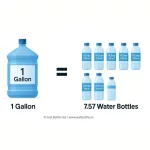


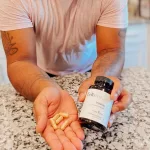



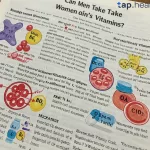
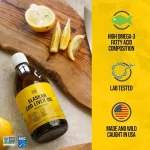

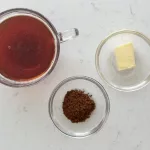
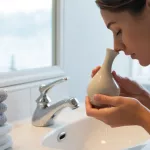
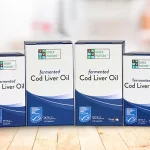
Leave a Reply
You must be logged in to post a comment.